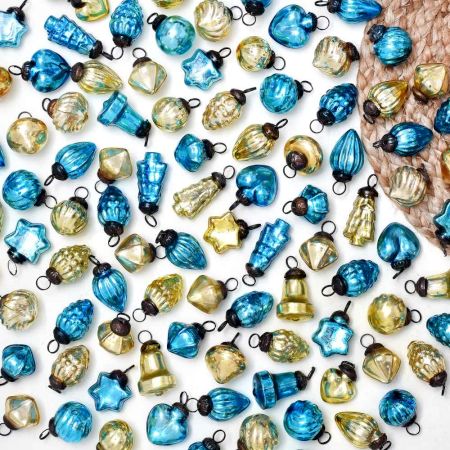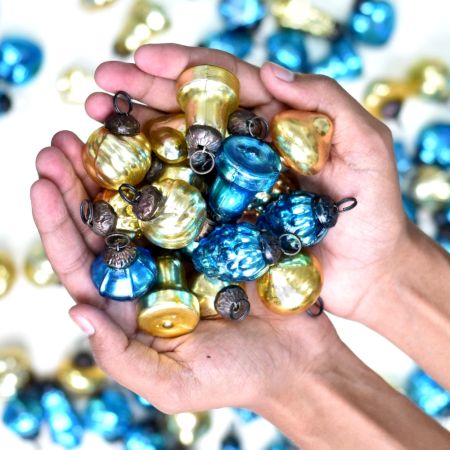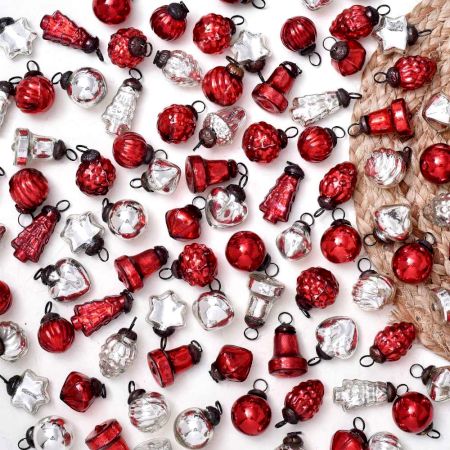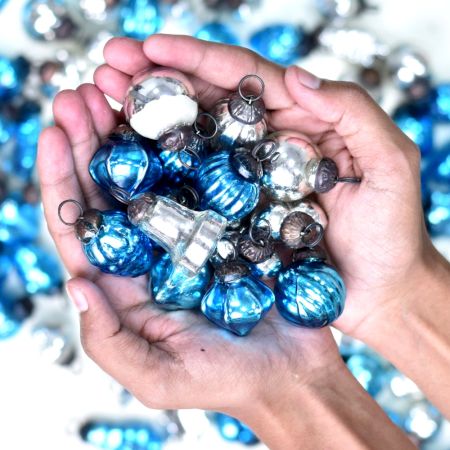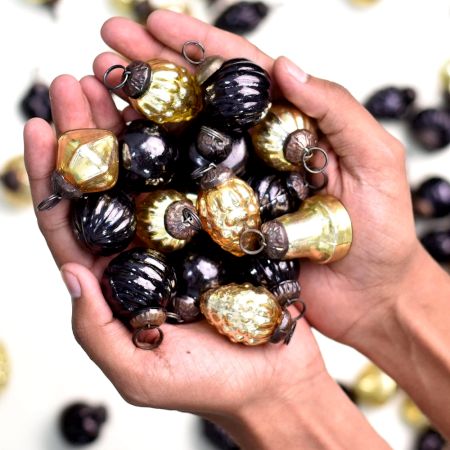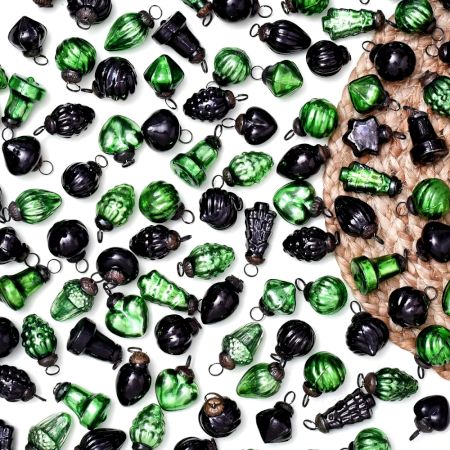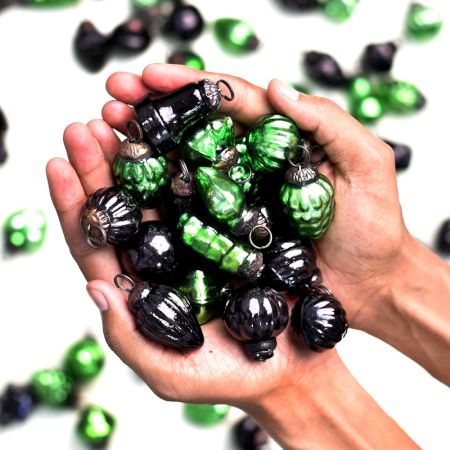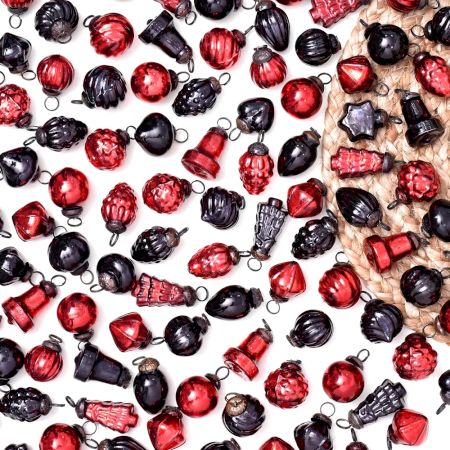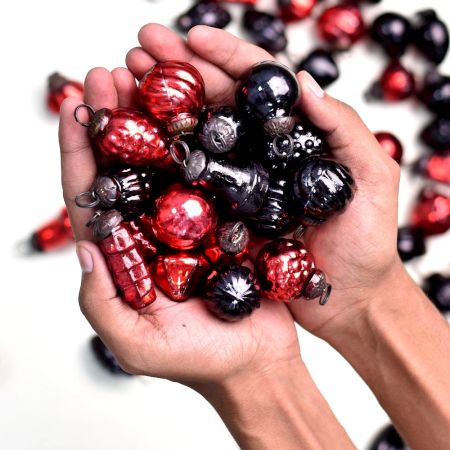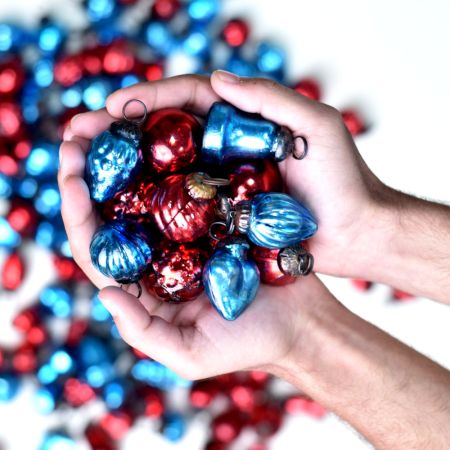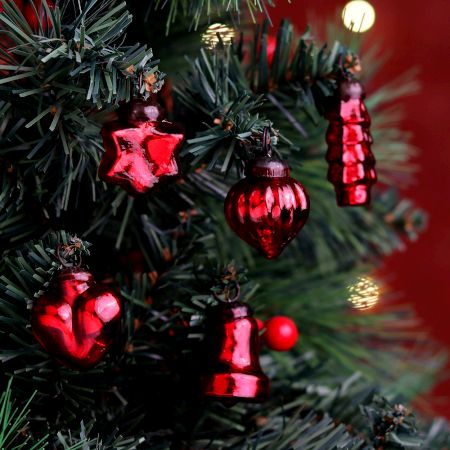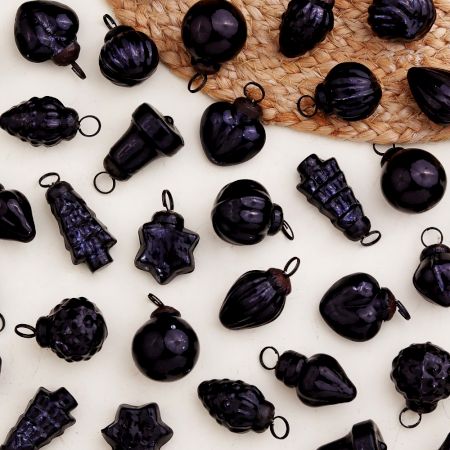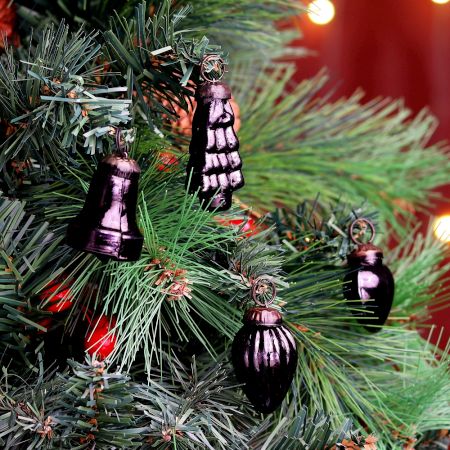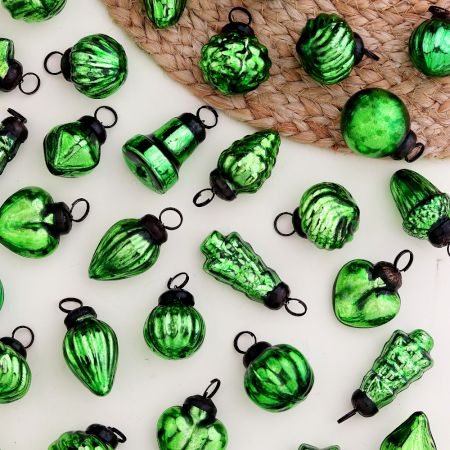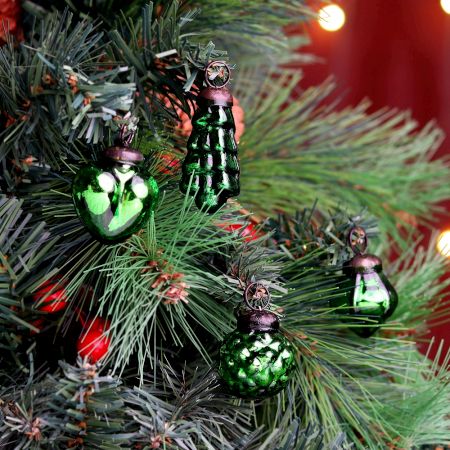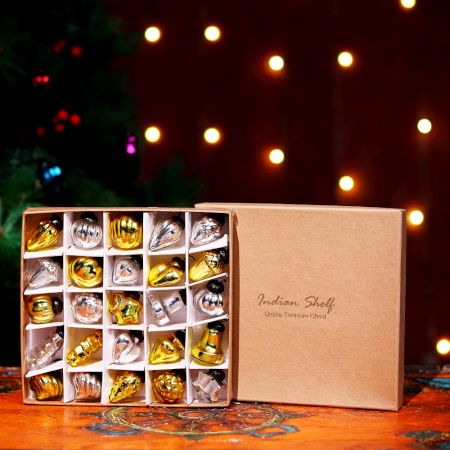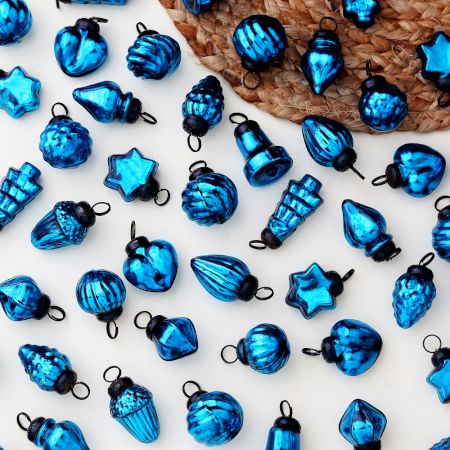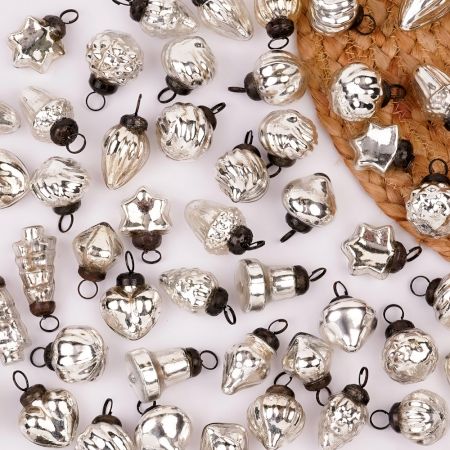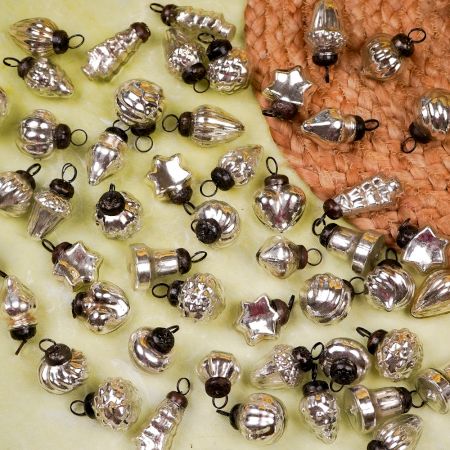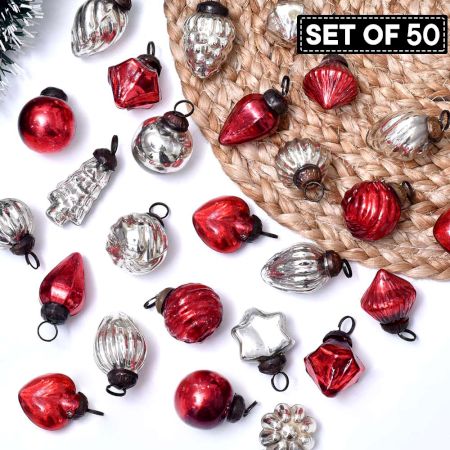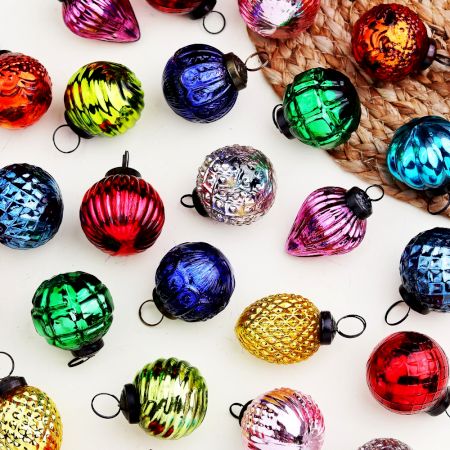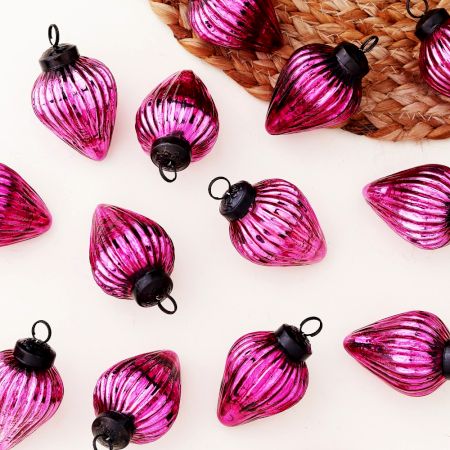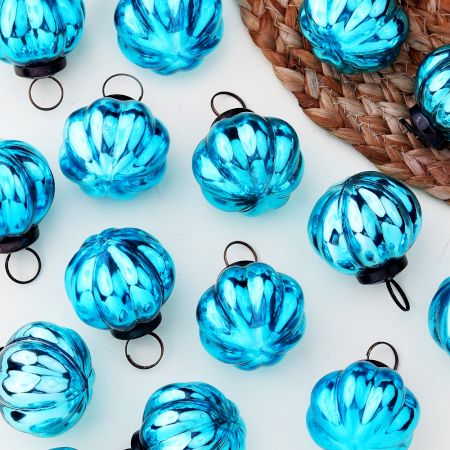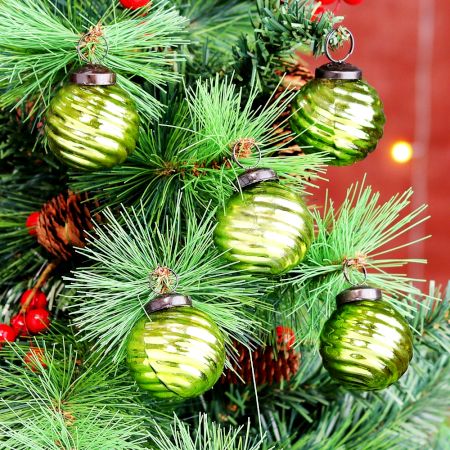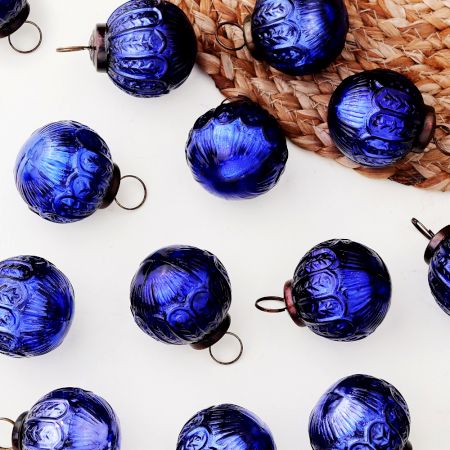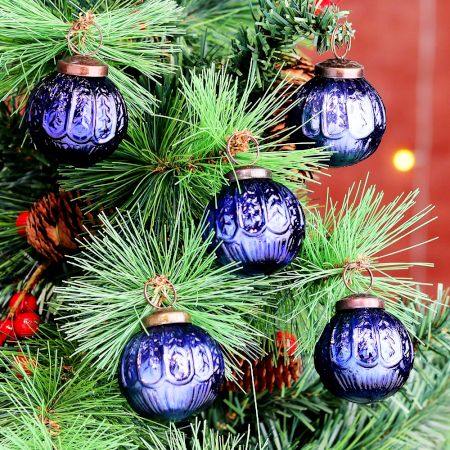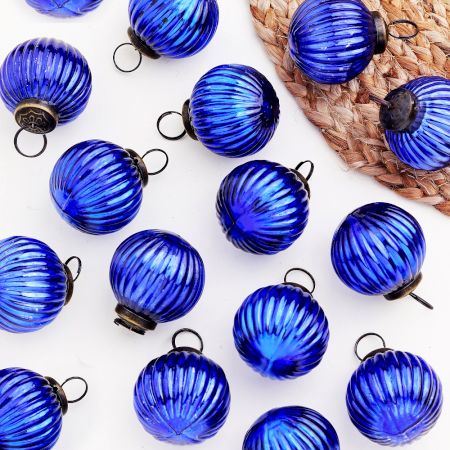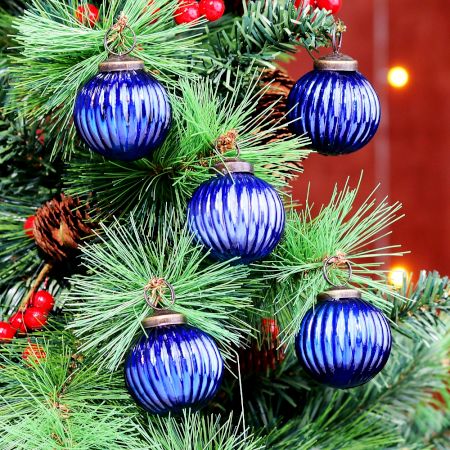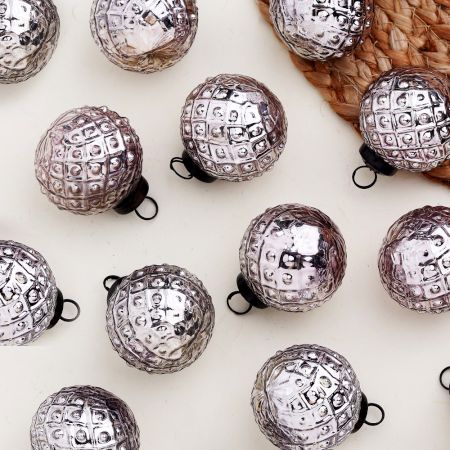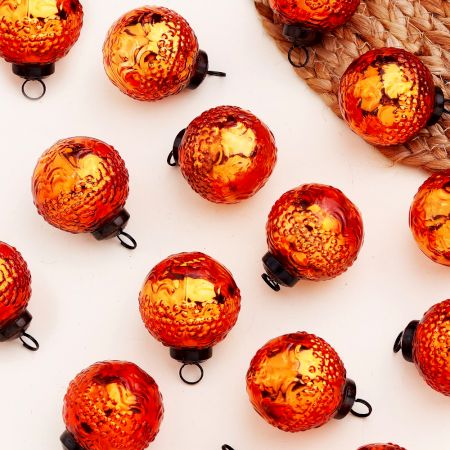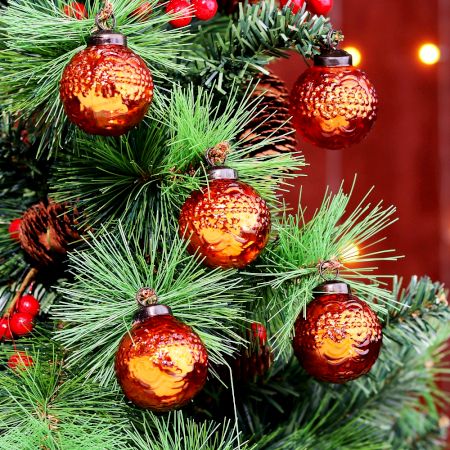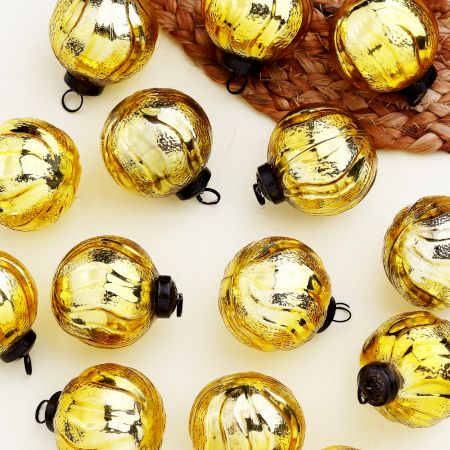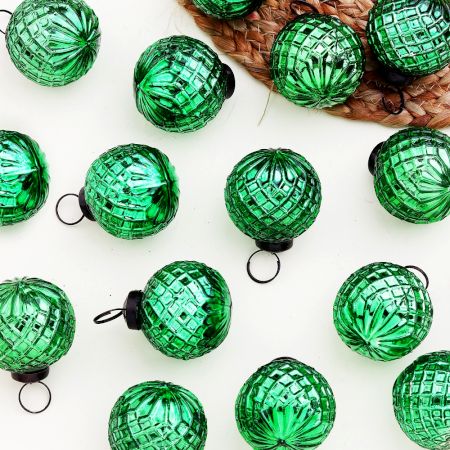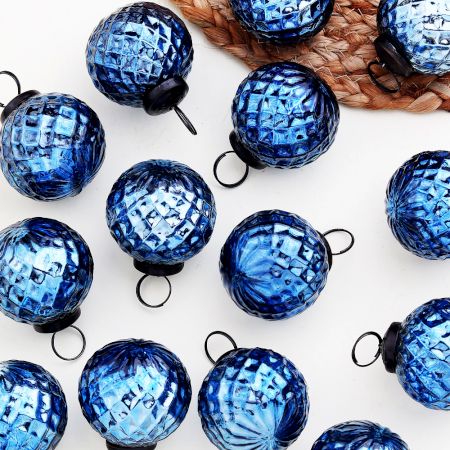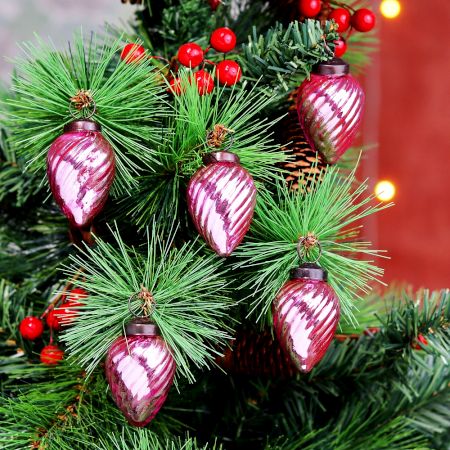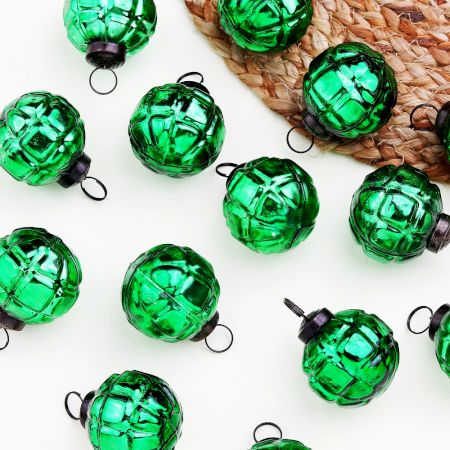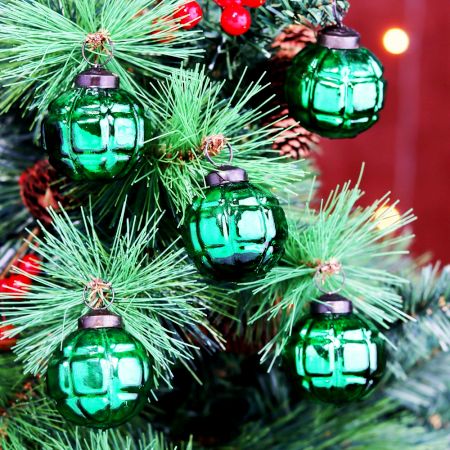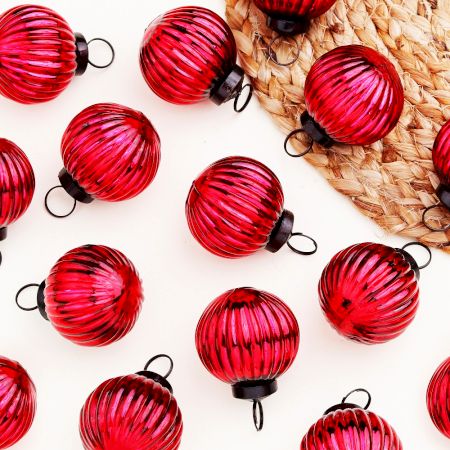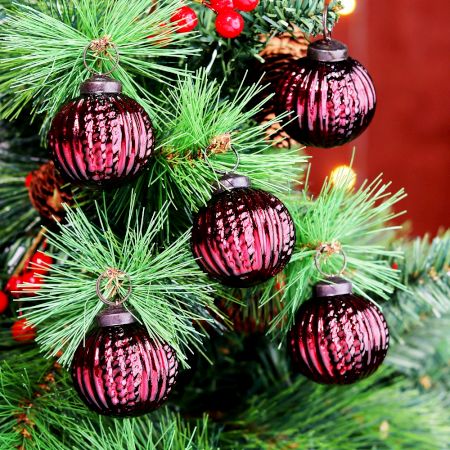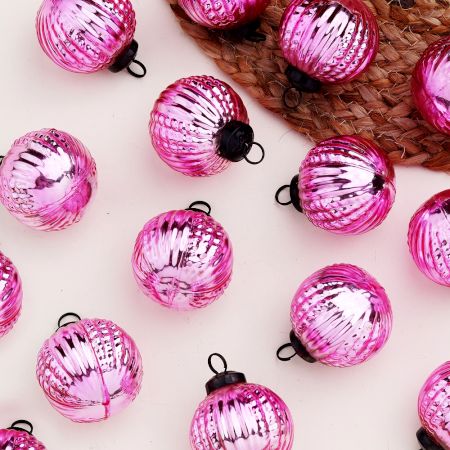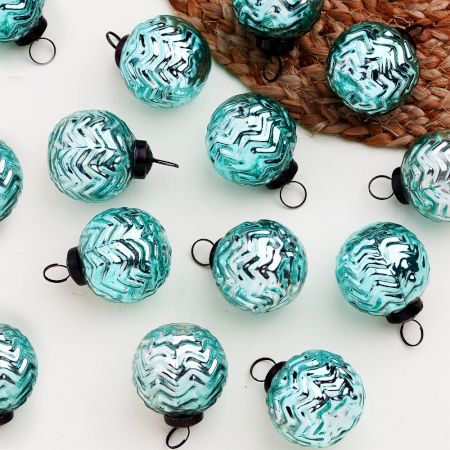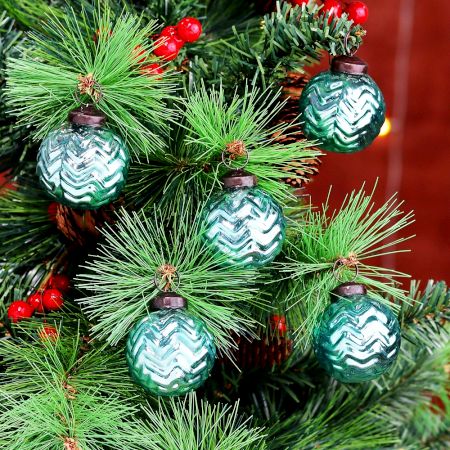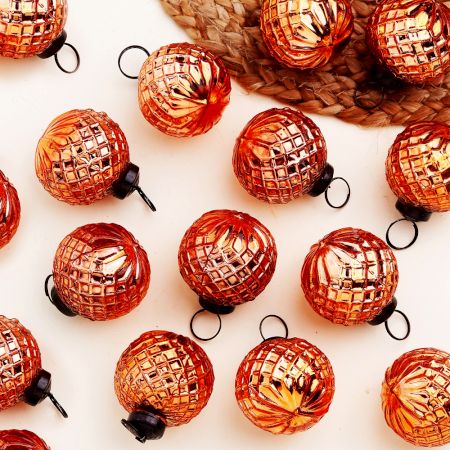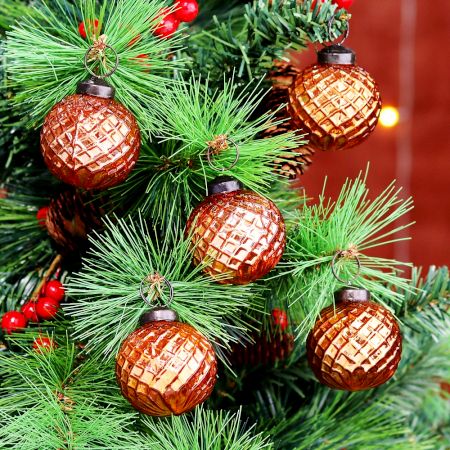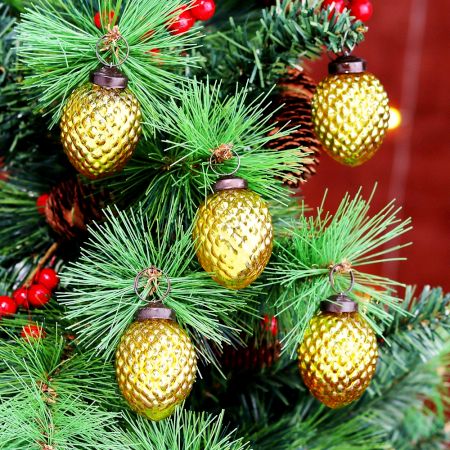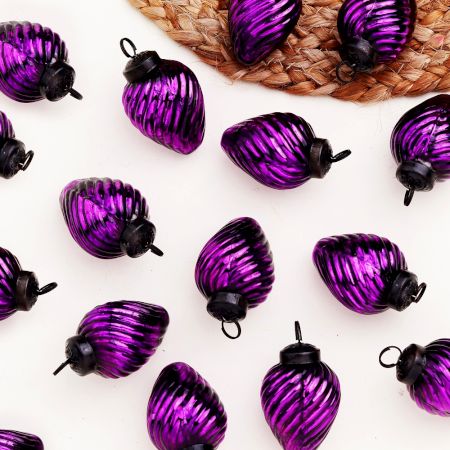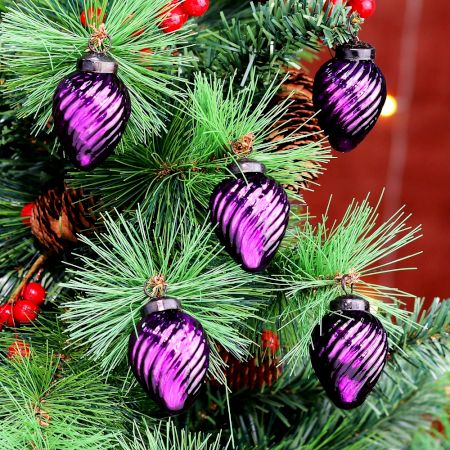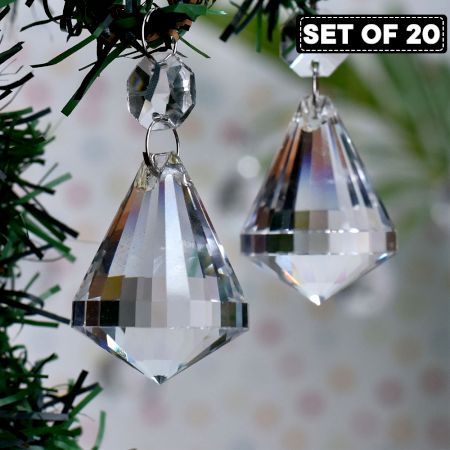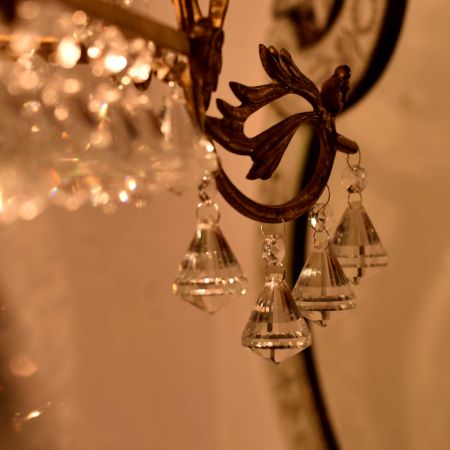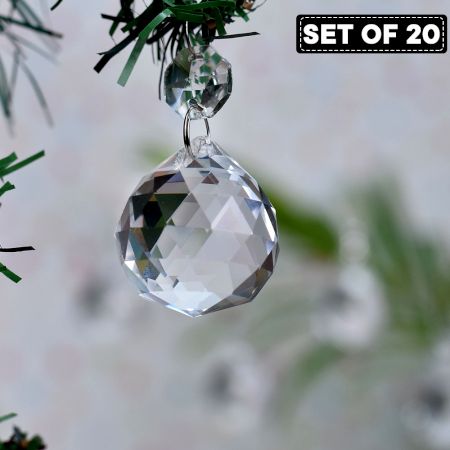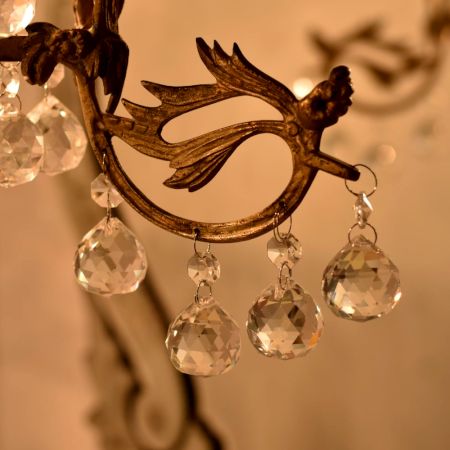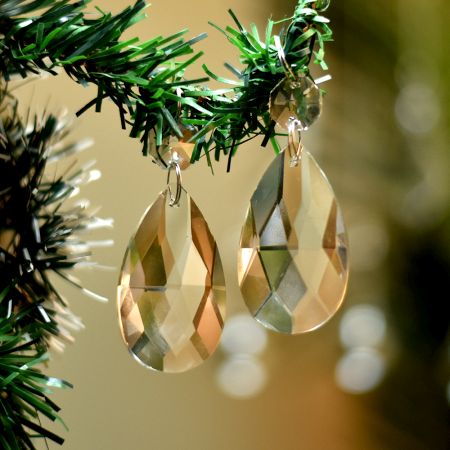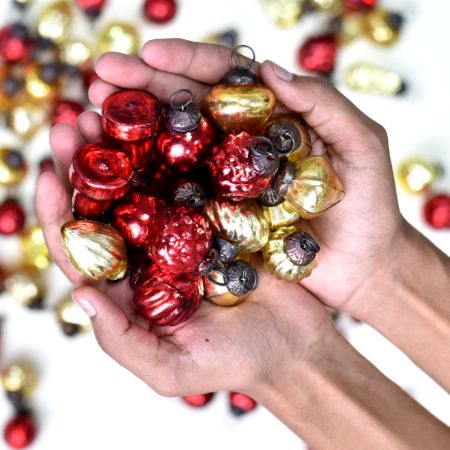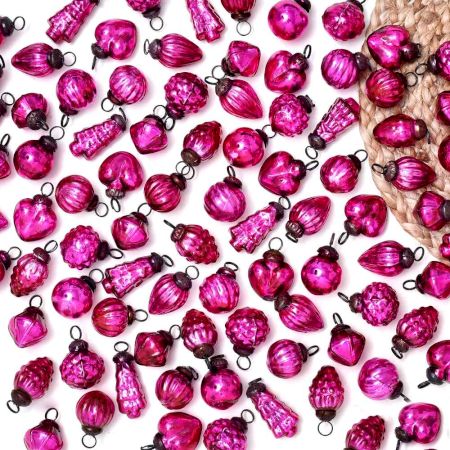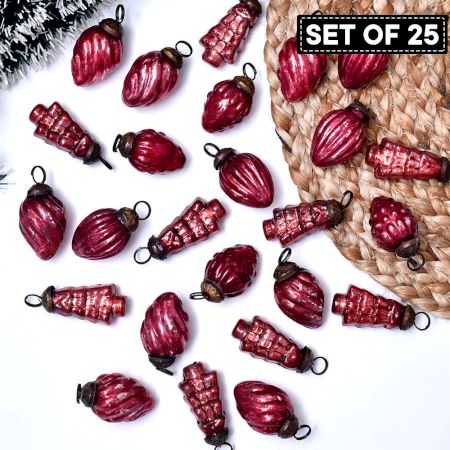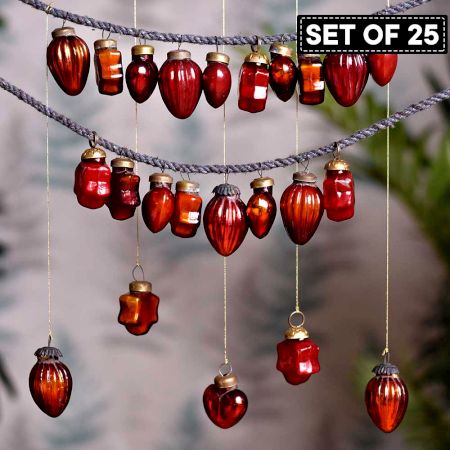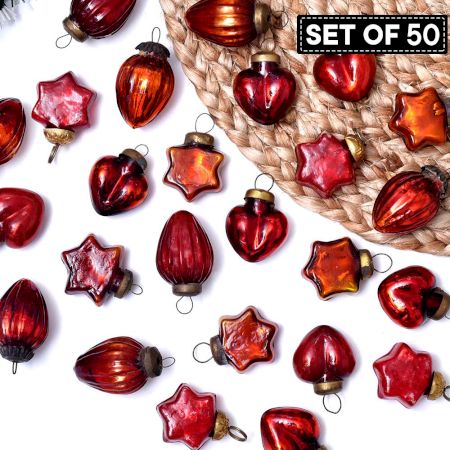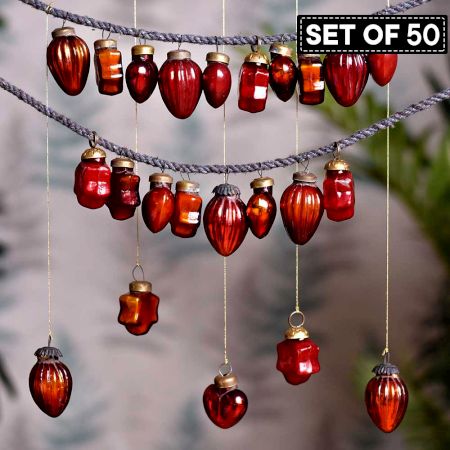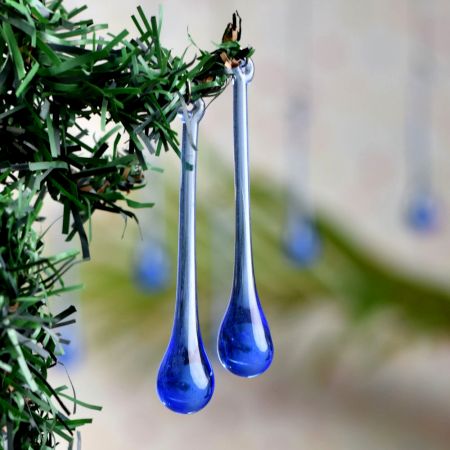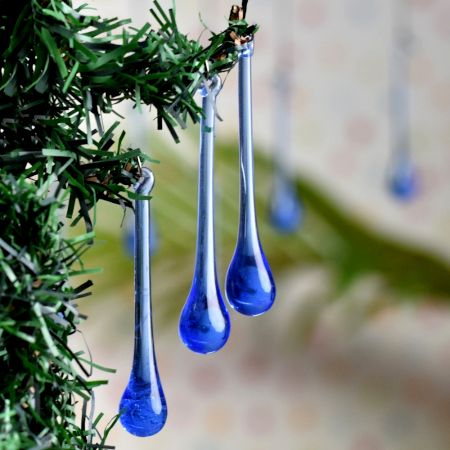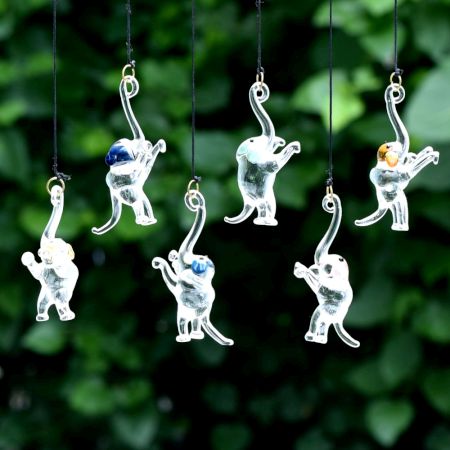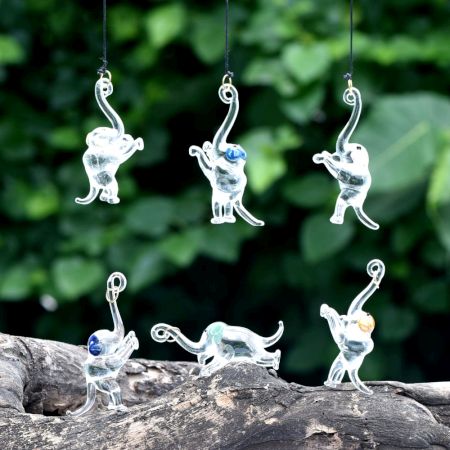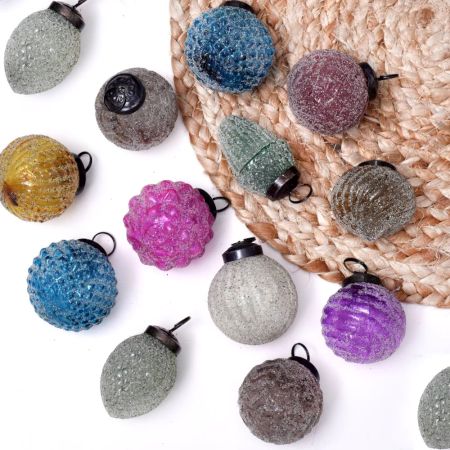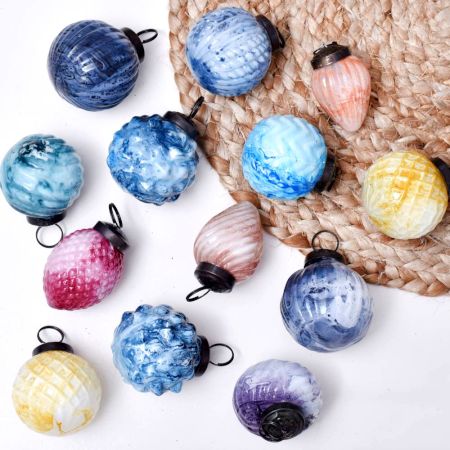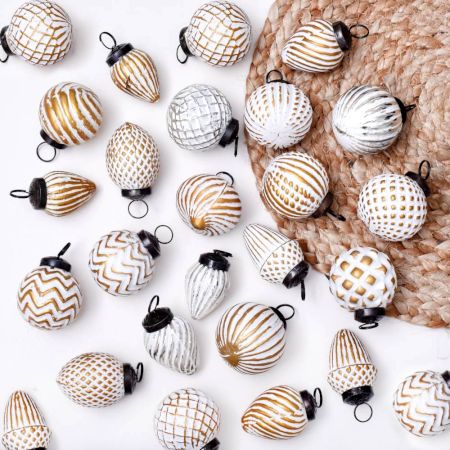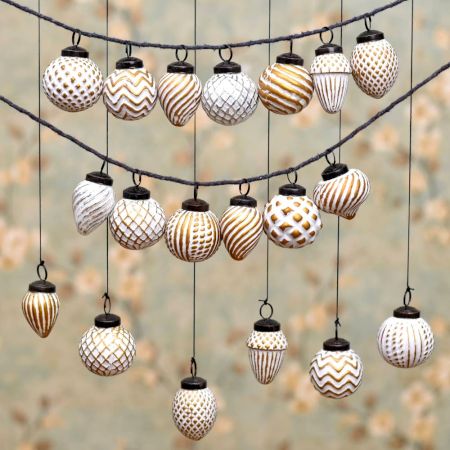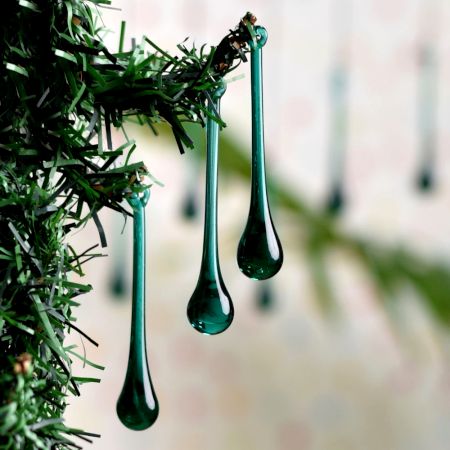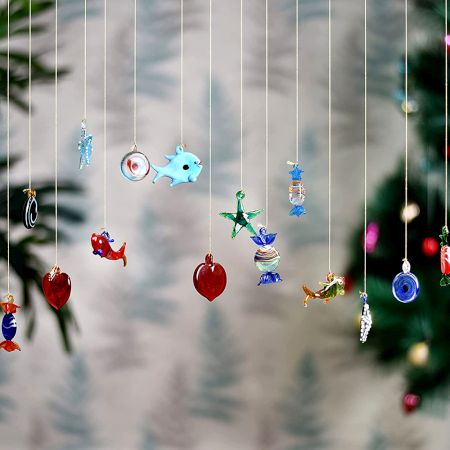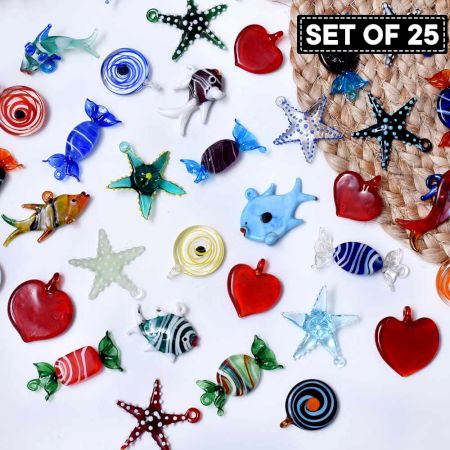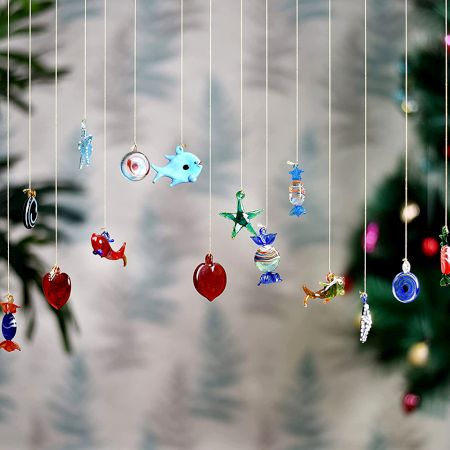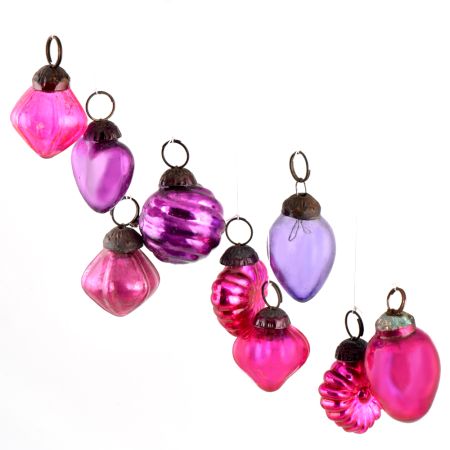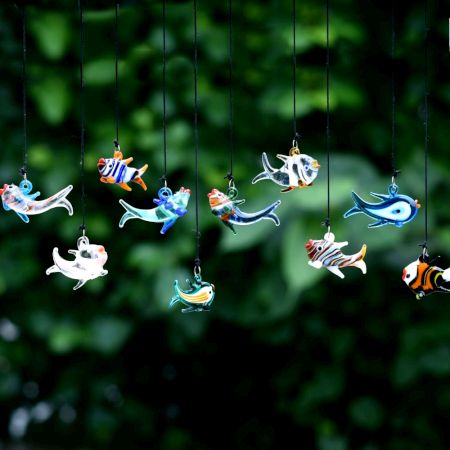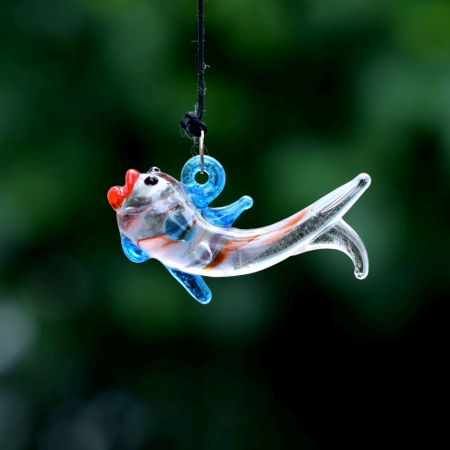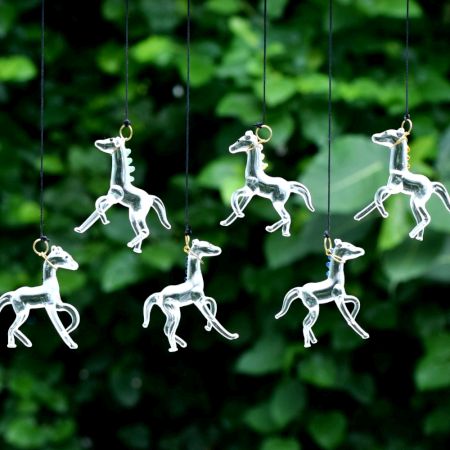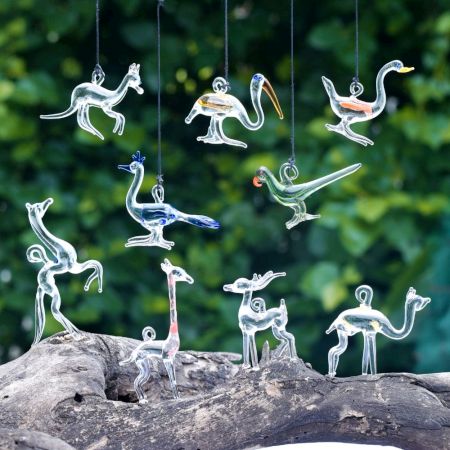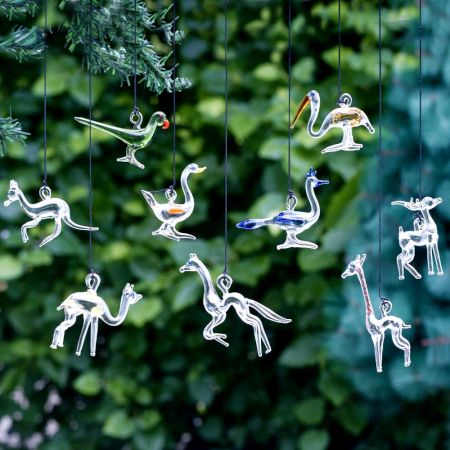Set of 25 Pieces Red and Golden Tiny Christmas Ornaments In Assorted Styles
-
₹ 799.02
₹ 1,331.70 -
Only a few left
25 Pieces Black and Golden Glass Ornaments For Tree Decoration
-
₹ 799.02
₹ 1,331.70 -
Only a few left
25 Pieces Black and Green Glass Ornaments For Tree Decoration
-
₹ 799.02
₹ 1,331.70 -
Only a few left
25 Pieces Black and Red Glass Ornaments For Tree Decoration
-
₹ 799.02
₹ 1,331.70 -
Only a few left
Set of 50 Pieces Red and Silver Tiny Christmas Ornaments In Assorted Styles
-
₹ 1,450.03
₹ 2,416.72 -
Only a few left
Set of 12 Glass Multicolor Christmas Ornaments For Tree Decoration
-
₹ 799.02
₹ 1,331.70 -
Selling fast
12 Pieces Decorative Lime Green Coloured Christmas Ornaments
-
₹ 799.02
₹ 1,331.70 -
Only a few left
12 Pieces Round Blue Glass Christmas Ornaments For Tree Decoration
-
₹ 799.02
₹ 1,331.70 -
Only a few left
12 Pieces Modern Glass Sky Blue Christmas Ornaments For Tree Decoration
-
₹ 799.02
₹ 1,331.70 -
Only a few left
12 Pieces Modern Glass Silver Christmas Ornaments For Tree Decoration
-
₹ 799.02
₹ 1,331.70 -
Selling fast
12 Pieces Amber Glass Christmas Ornaments For Tree Decoration
-
₹ 799.02
₹ 1,331.70 -
Only a few left
12 Pieces Decorative Red Glass Ornaments - Christmas Tree Ornaments
-
₹ 799.02
₹ 1,331.70 -
Only a few left
12 Pieces Decorative Green Glass Ornaments - Christmas Tree Ornaments
-
₹ 799.02
₹ 1,331.70 -
Only a few left
12 Pieces Blue Glass Ornaments - Christmas Tree Ornaments
-
₹ 799.02
₹ 1,331.70 -
Only a few left
12 Pieces Glass Pink Pinecone Christmas Ornaments For Tree Decoration
-
₹ 799.02
₹ 1,331.70 -
Only a few left
12 Pieces Decorative Glass Green Christmas Ornaments For Tree Decoration
-
₹ 799.02
₹ 1,331.70 -
Only a few left
12 Pieces Glass Red Christmas Ornaments For Tree Decoration
-
₹ 799.02
₹ 1,331.70 -
Only a few left
12 Pieces Glass Burgundy Christmas Ornaments For Tree Decoration
-
₹ 799.02
₹ 1,331.70 -
Only a few left
12 Pieces Pink Glass Christmas Ornaments For Tree Decoration
-
₹ 799.02
₹ 1,331.70 -
Only a few left
12 Pieces Modern Glass Sky Blue Christmas Ornaments For Tree Decoration
-
₹ 799.02
₹ 1,331.70 -
Only a few left
12 Pieces Modern Glass Christmas Hanging Ornaments For Tree Decoration
-
₹ 799.02
₹ 1,331.70 -
Only a few left
12 Pieces Decorative Glass Golden Christmas Hanging Ornaments
-
₹ 799.02
₹ 1,331.70 -
Only a few left
Set of 20 Clear Crystal Glass Faceted Diamond Christmas Ornaments-Chandelier Drop
-
₹ 900.02
₹ 1,500.03 -
Selling fast
Clear Crystal Glass Octagonal Christmas Ornaments-Chandelier Drop-Set of 20
-
₹ 900.02
₹ 1,500.03 -
Only a few left
50 Pieces Crimson Tiny Christmas Ornaments In Assorted Styles
-
₹ 1,450.03
₹ 2,416.72 -
Only a few left
Blue Glass Chandelier Drop Ornaments - Christmas Tree Ornaments - Set of 20
-
₹ 900.02
₹ 1,500.03 -
Only a few left
Clear Crystal Glass Twisted Icicles Christmas Ornaments-Chandelier Drop-Set of 20
-
₹ 900.02
₹ 1,500.03 -
Selling fast
Multicolor Assorted Mini Elephant Christmas Tree Ornaments Set of 6 Pcs
-
₹ 1,200.02
₹ 2,000.04 -
Only a few left
Set of 12 Glass Distressed Christmas Balls Ornamets For Tree Decoration
-
₹ 799.02
₹ 1,331.70 -
Only a few left
Set of 12 Glass Retro Christmas Balls Ornamets For Tree Decoration
-
₹ 799.02
₹ 1,331.70 -
Only a few left
Set of 12 Glass White and Brown Christmas Hanging For Tree Decoration
-
₹ 799.02
₹ 1,331.70 -
Selling fast
Set of 20 Dark Green Glass Chandelier Drop Ornaments - Christmas Tree Ornaments
-
₹ 900.02
₹ 1,500.03 -
Only a few left
Glass Multicolor Duck Christmas Tree Decoration Ornaments Set of 8 Pcs
-
₹ 800.02
₹ 1,333.36 -
Only a few left
Figurines Glass Tiny Christmas Ornaments For Kids In Assorted Styles Set of 50 Pcs
-
₹ 2,250.05
₹ 3,750.08 -
Only a few left
Figurines Glass Tiny Christmas Ornaments For Kids In Assorted Styles Set of 25 Pcs
-
₹ 1,125.02
₹ 1,875.04 -
Only a few left
Set of 9 Handmade Purple And Pink Mini Christmas Ornaments In Assorted Styles
-
₹ 825.02
₹ 1,375.03 -
Only a few left
Assorted Multicolor Toffee Kids Christmas Tree Decoration Ornaments Set of 10 Pcs
-
₹ 1,500.03
₹ 2,500.05 -
Only a few left
Assotrted Multicolor Glass Fish Christmas Tree Decorations Ornament Set of 10 Pcs
-
₹ 1,500.03
₹ 2,500.05 -
Only a few left
Glass Multicolor Horse Christmas Tree Decoration Ornaments Set of 6 Pcs
-
₹ 1,200.02
₹ 2,000.04 -
Only a few left
Animal Figurines Clear Glass Christmas Ornaments For Kids Set of 9 Pcs
-
₹ 1,500.03
₹ 2,500.05 -
Only a few left
Discover Mini Christmas Ornaments: Craftsmanship, Meaning & Holiday Charm
General Understanding of Mini Christmas Ornaments
Mini Christmas ornaments function as focused decorative elements that enrich a space through subtle detail. Their form expresses intention rather than spectacle, allowing each piece to communicate character through material, color, and craftsmanship. They create an intimate visual rhythm across trees, mantels, and shelves. Different cultures use small ornaments to represent renewal, blessing, and familial continuity. Their small size encourages deliberate placement, guiding viewers to notice delicate forms that often go overlooked in larger décor. They balance tradition with personal expression, allowing every home to build a distinct festive identity rooted in both charm and memory.
What Emotions Or Themes Do Mini Ornaments Commonly Portray?
Mini ornaments often carry themes of nostalgia, innocence, and seasonal wonder. Their imagery reflects childhood winters, cozy gatherings, and quiet rituals that define the festive spirit across generations. Emotional resonance arises from the way these pieces compress memory into a form that fits in the palm. Soft colours, playful shapes, and classic motifs bring warmth into the home, echoing old stories and comforting rhythms. Designers use each miniature as a vessel for sentiment, allowing objects to become reminders of caretakers, traditions, and moments that shaped one’s sense of celebration. They evoke gentle feelings that endure beyond the season.
What Are The Most Recognized Styles In Mini Christmas Ornaments?
Mini ornaments appear in styles shaped by culture, material, and artistic lineage. Glass minis capture light and create a shimmering backdrop. Wooden figures bring rustic familiarity, grounding a space with natural texture. Metallic designs introduce brightness and emphasize structure. Ceramic and porcelain pieces evoke delicacy and calm. Hand-painted forms add personality through colour variances and tiny patterns. These styles coexist easily, giving decorators permission to build scenes that move between elegance, playfulness, and heritage. Their adaptability has kept them relevant through changing eras, allowing people to express tradition through a distinctly personal visual language.
Why Are Mini Christmas Ornaments Still Loved In Modern Décor?
Mini ornaments remain cherished because they transition effortlessly into contemporary spaces without losing emotional depth. Modern décor often favours refined arrangements, and small ornaments fit naturally into this approach. They provide detail without overwhelming the environment, making them suitable for minimalist, rustic, and bold interiors alike. Their charm lies in their ability to preserve tradition while evolving with new colour palettes and artistic techniques. A frosted bauble blends into Scandinavian calm. A carved figure enriches cottage-inspired warmth. A metallic charm adds sophistication to modern symmetry. They stay relevant because they bridge past and present with quiet authenticity.
Techniques, Mediums and Artistic Tools
Crafting mini ornaments requires precision, patience, and a steady understanding of how small forms communicate emotion. Makers refine techniques that allow intricate lines, subtle curves, and balanced textures. A glassblower shapes tiny droplets into fragile silhouettes. A woodcarver follows delicate grains that guide the blade. Resin work captures fine detail, while fabric minis rely on stitching that demands rhythm and clarity. These techniques honour a long lineage of seasonal craft, carrying the spirit of handmade artistry into modern collections. Each method becomes part of the ornament’s identity, influencing how it feels, reflects light, and tells its quiet story.
How Are Mini Christmas Ornaments Traditionally Crafted?
Traditional crafting methods for mini ornaments stem from generational practices. Glass pieces begin as molten material blown into small spheres or molded into figurative shapes through controlled breath and temperature shifts. Wood ornaments take form from seasoned blocks carved slowly to preserve stability. Resin minis rely on detailed molds, giving them consistency while preserving aesthetic complexity. Fabric pieces use embroidery, felt layering, or ribbon work to create softness and depth. These processes come from cultures that treated ornament-making as a seasonal ritual. Each technique preserves intention, giving the final piece personality rooted in craft, tradition, and emotional connection.
What Materials Are Commonly Used For Mini Ornaments?
Materials used for mini ornaments shape the decorative experience. Glass remains a timeless choice, offering clarity, shine, and elegant weightlessness. Wood brings warmth with visible grains that add rustic character. Porcelain and ceramic introduce smooth surfaces and subtle refinement. Metal creates brightness and durability. Resin allows intricate shapes and repeatable detail. Fabric ornaments contribute softness and colour variation that make a tree feel personal and lived-in. Regional traditions influence these preferences. Cold climates favour wood and felt. Urban spaces lean toward metal and glass. Each material changes how an ornament interacts with light, memory, and atmosphere.
What Role Do Texture And Material Play In Mini Ornament Design?
Texture and material determine how a mini ornament communicates emotion. A glossy finish reflects festive lights and creates sparkle. A matte wooden surface embodies comfort and familiarity. Fabric textures soften a room, encouraging warmth and tactile memory. Texture acts as a visual cue, guiding how the eye moves between objects and how the mind interprets mood. For many families, texture recalls the feel of ornaments from childhood, carrying emotional continuity through generations. Material influences tone. Glass creates elegance. Wood evokes tradition. Fabric suggests intimacy. Together, texture and substance transform small objects into meaningful seasonal expressions.
Artistic Intent and Visual Storytelling
Mini ornaments tell stories through symbolism, colour, and the familiarity of seasonal motifs. Their scale invites personal interpretation, allowing viewers to construct narratives from tiny gestures. Some represent childhood memories, while others symbolize blessings or cultural identity. A small star suggests guidance. A miniature house echoes familial bonds. A painted bell evokes celebrations shared across generations. These objects operate as visual poems, expressing emotion through crafted form. They shape the energy of a space, creating a festive environment where memory and imagination coexist. Their storytelling power lies in their ability to hold meaning within a quiet, detailed frame.
What Stories Or Messages Do Mini Ornaments Aim To Convey?
Mini ornaments carry messages shaped by tradition, memory, and cultural symbolism. Many represent themes of togetherness, hope, or renewal. A childlike figure may evoke early winters filled with anticipation. A winter animal might embody resilience. A tiny wreath reflects continuity through time. These pieces become storytellers in the home, guiding viewers through moments of reflection as they decorate the tree or mantel. The narratives they hold are often personal, anchored to family customs and small rituals repeated each year. This narrative depth makes them more than décor. They become reminders of what the season feels like at its core.
How Do Designers Add Cultural, Spiritual, Or Seasonal Symbols?
Designers incorporate culturally rooted symbols through motifs, colour palettes, and shaped forms. In some regions, stars and angels represent spiritual protection. In others, animals like deer or birds symbolize endurance and guidance. Colour choices reflect cultural meaning. Deep reds may represent celebration, while icy tones evoke winter serenity. Patterns drawn from textiles, folklore, or regional craft traditions bring heritage into each piece. Designers interpret these elements in miniature scale, turning familiar symbols into small, emotionally rich objects. This interplay between culture and ornament design allows each piece to resonate with identity, belief, and collective memory.
How Do Color, Light, And Detail Influence Their Mood?
Colour, light, and detail define the emotional tone of mini ornaments. Warm hues create comfort. Cool tones evoke calm. Metallic surfaces catch surrounding light, adding motion and sparkle. Matte finishes soften the visual field, encouraging stillness. Fine details enhance personality, whether through painted lines, etched patterns, or textured surfaces. These elements shape atmosphere by influencing how ornaments glow under festive lights or blend into natural daylight. The mood shifts based on arrangement, colour harmony, and material interaction. These components guide emotion, turning simple objects into contributors to the seasonal environment, shaping the room’s energy at a subtle level.
Purchase, Collection and Investment of Mini Christmas Ornaments
Mini Christmas ornaments invite an intimate form of collecting where scale sharpens sentiment. Their appeal grows from the way small objects preserve memory, craft, and the quiet excitement of discovery. Enthusiasts often explore niche Christmas boutiques, curated artisan markets, and established heritage décor labels to find meaningful pieces. Independent creators on craft platforms offer minis with unusual shapes, hand-finished textures, and seasonal stories, making the search feel more personal. Limited runs and festival releases attract collectors who value the quiet rarity of small-batch designs. The journey itself becomes part of the ornament’s emotional weight.
Where Can You Buy Authentic Or Collectible Mini Ornaments?
Authentic minis usually appear in curated stores that prioritise craft traditions and durable techniques. These include Christmas speciality shops, artisan-led markets, and platforms dedicated to handmade décor. Established heritage brands release annual collections that carry recognisable signatures, while independent artists often create experimental minis with enriched texture and narrative. The appeal lies in the search for pieces built with precision rather than mass replication. Some collectors even explore international Christmas fairs, where regional motifs reveal how different cultures adapt miniature art. Each source opens a window into another version of festive storytelling, leaving you with ornaments that feel collected rather than simply bought.
How Can You Verify Authenticity Or Craft Quality?
Authenticity in mini ornaments can be felt in craft discipline. True pieces carry consistent finishing, clean edges, and stable weight. Many artisans include signature marks or authenticity cards that reveal the lineage behind the design. Heritage brands engrave tiny identifiers on metal hooks or glass bases, making verification easier. Material integrity matters too, since glass, porcelain, wood, and metal react differently to touch, light, and time. When the ornament is genuine, its detailing appears more intentional, its colours more stable, and its structure more dependable. Quality feels like a dialogue between the maker’s patience and the ornament’s delicate scale.
What Makes Mini Ornaments A Worthwhile Investment?
Certain minis grow in value because they belong to small-batch releases or seasonal collections that discontinue after a short run. Hand-crafted pieces age gracefully when created with stable mediums, making them ideal for long-term emotional and financial appreciation. Families often treat these minis as heirlooms since their size allows effortless storage and smooth generational transfer. Their sentimental worth sometimes surpasses their market price, especially when tied to personal rituals. Over the years, their rarity increases, and their stories deepen, giving them a place in both décor and memory. Investment becomes less about numbers and more about continuity.
Care, Storage and Preservation of Mini Christmas Ornaments
Mini ornaments require a gentler rhythm of care because their delicate materials react quickly to temperature shifts and handling. Most people store them separately, allowing soft padding or cotton layers to shield fine surfaces. Their preservation becomes a ritual in itself, turning post-season packing into an act of responsibility. Display pieces such as glass minis demand extra attention to avoid scratches, while fabric minis require dryness to resist moisture harm. When handled thoughtfully, their original tones remain intact, carrying the same emotion each year.
How Do You Properly Store And Maintain Mini Ornaments?
Proper storage begins with isolating each piece so no ornament touches another. Soft padding keeps fragile surfaces safe from friction, while separate boxes create a controlled environment. Glass and ceramic minis benefit from additional cushioning that prevents pressure cracks. Cool, dry spaces help maintain material stability, especially for painted surfaces. Handling should remain gentle, ensuring that hooks, loops, and trims stay secure. Maintenance becomes a seasonal habit where you check for loose parts, faint scratches, or fading details. Over time these small rituals preserve their character and extend their presence across many winters.
What Frames, Stands, Or Displays Complement The Mini Aesthetic?
Mini ornaments shine when presented with a sense of respect for scale. Shadow boxes protect delicate shapes while offering a gallery-like presence. Floating shelves highlight individual pieces without crowding the space. Mini trees add theatrical charm, transforming each ornament into a character within a festive scene. Ornament trays allow seasonal rotation, making décor feel dynamic rather than static. When displays match the ornament’s size and tone, the effect feels intentional. The key is balance, where presentation enhances the miniature instead of overpowering it.
Can Old Mini Ornaments Be Restored Without Losing Character?
Restoration is most successful when approached with patience and precision. Experts can stabilise cracks, retouch fading paint, and reinforce fragile hooks while preserving the ornament’s original texture. The aim is not to perfect the piece but to respect its journey. A careful restoration revives structural integrity without erasing the marks that shape its identity. When done correctly, the ornament returns to display with its history intact, carrying both age and renewal in the same breath. This balance between preservation and repair keeps its emotional narrative alive.
What Damages Do Mini Ornaments Commonly Face?
Mini ornaments often suffer from chipped surfaces, fading colours, or loosened hooks caused by seasonal handling. Moisture can warp fabric minis or dull metallic shine. Glass pieces remain vulnerable to sudden temperature changes that create fine cracks. Over time, even minor friction affects painted details. Recognising these risks helps you build caring habits that keep their beauty alive. Their delicacy becomes part of their charm, inviting a softer pace when displaying and storing them.
Home Decor, Styling and Mood Setting with Mini Christmas Ornaments
Mini ornaments influence spaces in subtle, atmospheric ways. Their scale allows them to hide in corners, hang from unexpected places, or cluster into small festive pockets that transform the room’s emotional tone. They bring intimacy to Christmas décor because they require the viewer to come closer. This closeness creates warmth, nostalgia, and a sense of gentle playfulness. Minis blend easily into both quiet interiors and expressive holiday setups, adapting to the language of the room.
How Can Mini Ornaments Influence A Room’s Mood?
Mini ornaments shape the room’s mood through size, shimmer, and narrative. Their presence encourages softer lighting since they react beautifully to warm glows and reflections. When scattered across shelves or hanging delicately from branches, they create a layered visual rhythm that feels cosy rather than overwhelming. Their imagery often carries emotional memory, allowing each corner to feel personal. Whether the theme is rustic, contemporary, or whimsical, minis infuse the space with a sense of thoughtful curation.
What Interior Styles Pair Well With Mini Ornaments?
Mini ornaments adapt effortlessly to diverse interiors. Minimalist homes use them as gentle accents that maintain openness while adding a festive whisper. Traditional settings embrace them in clusters, allowing their detail to enhance existing décor. Scandinavian spaces favour their simplicity and calm tones, while rustic rooms celebrate their handcrafted presence. Vintage-inspired interiors find harmony with glass and metal minis that echo old-world charm. Their versatility makes them compatible with any room seeking a soft festive touch.
How Do You Choose The Right Mini Ornaments For Each Space?
Each room requires a different emotional tone. Living rooms benefit from reflective pieces that interact with ambient light and become part of shared festivities. Hallways often use colourful minis to create charming transitions. Studies prefer softer hues and matte finishes that maintain calm while hinting at the season. Bedrooms can host warm-toned minis that evoke comfort and quiet joy. Choosing the right minis involves understanding how the room breathes and selecting pieces that amplify its natural rhythm.
Cultural Impact and Legacy of Mini Christmas Ornaments
Mini Christmas ornaments hold a cultural presence deeper than their size suggests. They move through festivals, homes, and decades with a kind of gentle persistence, carrying artistry shaped by memory. Their appeal often comes from the way miniature forms preserve regional craft traditions with quiet dignity. In many homes, these pieces mark family rituals that return every winter, reflecting the way communities embed meaning into tiny objects. The legacy grows each year because people continue to pass them down, renewing the emotional weight of old celebrations. Minis become cultural footprints, holding stories that remain long after their creators.
What Is The Cultural Significance Of Mini Ornaments?
Mini ornaments carry layers of cultural meaning because they capture delicate details tied to region, family, and tradition. Their scale allows artists to showcase specific craft styles, from hand-blown glass to intricate embroidery, echoing practices shaped over centuries. Families often treat them as seasonal storytellers, letting each ornament remind them of a past celebration or shared moment. When placed on a tree or shelf, these pieces create a visual archive of festive history. Their significance grows when they evoke rituals that feel timeless, turning simple decoration into cultural continuity. In this way, minis preserve heritage without needing to speak loudly.
How Did Different Cultures Shape The Mini Ornament Tradition?
Different regions left their imprint on the evolution of mini ornaments, creating a global vocabulary of shapes and textures. Germany contributed precision glasswork that elevated transparency and shine. Nordic traditions introduced carved wood forms that emphasised warmth and simplicity. American folk art brought colour-forward storytelling, while Eastern artisans introduced embroidery and beadwork with refined detail. Each cultural approach shaped the ornament’s identity, making it both local and universal. As these traditions blended across generations, minis became cultural ambassadors. Their designs reflect migrations, exchanges, and shared celebrations, showing how festive objects can travel through time and meaning without losing authenticity.
Which Designers Shaped The World Of Mini Ornaments?
Several creators shaped mini ornaments by bringing craft discipline and narrative detail into the spotlight. European artisans working with traditional glass techniques gave minis their early character. Later, independent makers across different countries introduced playful forms, intricate paintwork, and limited-edition series. Modern handcrafted brands expanded the tradition with thematic collections inspired by folklore, winter landscapes, and family rituals. These designers elevated minis from simple festive décor to collectible art objects. Their influence shows how creativity and cultural memory can come together in miniature form. Over time, these contributions built a legacy where craftsmanship and sentiment remain inseparable.
Mini Ornaments vs Other Holiday Décor
Mini ornaments differ from larger holiday décor because they thrive on intimacy rather than scale. Their charm lies in how they invite closer attention, turning small corners into meaningful scenes. In rooms filled with big festive gestures, minis create soft counterpoints that feel intentional and personal. Their role is complementary, shaping quieter emotional textures. This difference gives them a versatility many other decorations lack.
How Are Mini Ornaments Different From Regular-Sized Ornaments?
Mini ornaments function through detail instead of grandeur. Their small format encourages artists to focus on precision, colour balance, and shape-specific storytelling. On a tree, minis create layered depth by filling spaces that large ornaments can’t reach. In compact rooms, they offer design flexibility without overwhelming the décor. The intimacy they create feels different from the visual dominance of big ornaments, which often rely on size to capture attention. Minis instead work through suggestion, subtle shine, and emotional closeness. This difference transforms the holiday environment by adding nuance, creating an atmosphere defined by careful placement and quiet charm.
What Sets Mini Ornaments Apart From Printed Or Digital Décor?
Mini ornaments carry a tactile presence that printed or digital décor cannot replicate. Their weight, texture, and materiality invite touch and interaction, making them feel alive within a space. Handcrafted minis also hold imperfections that add character, revealing the maker’s gesture in every line and colour stroke. Printed décor offers convenience but rarely holds the same emotional gravity. Digital visuals can enhance ambiance, yet they remain intangible. Mini ornaments, by contrast, create a sensory connection that binds memory with material. Their presence brings physicality to holiday storytelling, anchoring the season in something beautifully real.
How Do Mini Fabric Ornaments Differ From Glass Or Metal Minis?
Fabric minis create warmth through softness and muted texture. They feel comforting, especially in spaces that favour handcrafted or rustic styles. Glass minis introduce radiance, catching and reflecting light in a way that instantly elevates festive mood. Metal minis offer structural strength and a polished finish, often bringing a contemporary or vintage shine depending on their design. Each material shapes the atmosphere differently. Fabric carries intimacy, glass delivers brilliance, and metal adds clarity. These contrasts allow people to curate décor that matches their emotional and aesthetic preferences with fine precision.
Emotional and Symbolic Value of Mini Christmas Ornaments
Mini ornaments evoke emotion because they embody memory in small forms. Their size encourages people to attach meaning to tiny gestures, colours, and motifs. Over time, each mini becomes a vessel for seasonal nostalgia, carrying the quiet magic of earlier winters. Their emotional depth grows through repetition, as they return year after year with familiar comfort.
Can Mini Ornaments Serve As Meaningful Gifts?
Mini ornaments make tender gifts because they feel personal and symbolic. Their smallness communicates thoughtfulness, as if the giver chose something intimate rather than extravagant. Many people associate minis with moments that shape holiday identity, turning a simple object into a gesture full of intention. When given as a gift, a mini ornament becomes part of the recipient’s seasonal memories, returning each year with renewed sentiment. They hold meaning that exceeds monetary value because they carry story, craftsmanship, and presence. This emotional resonance transforms a small object into a lasting connection between two people.
What Emotional Value Do Inherited Mini Ornaments Hold?
Inherited minis hold a unique emotional gravity because they bridge generations. Each piece carries fragments of rituals, gatherings, and celebrations once shared by earlier family members. Their wear, slight fading, or softened colours become traces of time rather than flaws. When placed on a tree, they recreate the emotional landscape of old celebrations, connecting the present to the past. Families treasure these minis because they preserve identity through objects that feel alive with memory. Their sentimental value often outweighs any financial worth, becoming a quiet anchor for collective remembrance.
Why Do People Feel Attached To Tiny Holiday Ornaments?
People form attachments to mini ornaments because small objects often hold the strongest memories. Their scale invites closeness, encouraging people to recall childhood scenes, winter rituals, and moments of wonder. Minis also possess an emotional dignity, carrying stories without demanding attention. This subtle presence allows them to weave into life gently, season after season. They become reminders of joy that doesn’t shout but lingers. In a fast world, their stillness offers comfort. Their charm lies in how they make the festive season feel both intimate and timeless.
Frequently Asked Questions (FAQs)
What Defines A Christmas Ornament As “Mini”?
A mini ornament is defined by scale and purpose. It is palm-sized or smaller and designed to work within tight visual fields. Size is the primary marker, but intent matters too. Minis aim for intimacy rather than spectacle. They fit on small branches, in shadow boxes, and as accent pieces on shelves. Craft choices follow scale: finer brushes, smaller molds, and delicate hooks. Historically, regional craft traditions produced tiny talismans and charms that later migrated into seasonal décor, giving minis a cultural lineage. Material constraints also help define minis; very thin glass, fine wood, and light-weight fabric are typical. Designers make deliberate tradeoffs between detail and fragility. The result is an object that invites close inspection and quiet memory. Takeaway. A mini is both a small object and a small story meant to be discovered up close.
Can Mini Ornaments Be Recreated Authentically Today?
Yes, authentic recreation is possible and common. Contemporary artisans combine traditional technique with modern refinements. Glassblowers still mouth-blow small spheres, but now use improved furnaces for stable temperatures. Woodcarvers follow old patterns while using precision tools that preserve hand character. Textile minis keep hand-stitched motifs but benefit from colorfast threads. Authenticity is more than copying shape. It requires respecting original methods, materials, and cultural context. Some makers reproduce vintage molds and inks. Others study museum pieces or family heirlooms to match patina and scale. Regional crafts remain important. German and Bohemian techniques endure in glass. Scandinavian carving still informs wooden minis. When makers document provenance and methods, the recreation reads as genuine. Takeaway. Authentic minis are alive when technique, material, and story align.
How Do You Protect Mini Ornaments From Light And Moisture Damage?
Protecting minis is a routine of gentle control. Store them in soft-lined boxes with individual compartments. Use acid-free tissue or cotton padding to prevent abrasion. Choose containers that breathe slightly; completely sealed plastics can trap moisture and encourage corrosion. Keep storage in cool, stable environments away from direct sunlight. Light fades painted surfaces and weakens some dyes. Low humidity prevents wood warping and metal tarnish. For display, avoid prolonged exposure to windows or strong bulbs. Rotate delicate pieces so materials rest between seasons. When handling, wear clean hands or thin cotton gloves to avoid oils transferring to surfaces. Small inspections each season catch loose hooks or early fading. Takeaway. Simple, consistent care prevents most light and moisture damage and keeps minis ready for display.
Are Mini Ornaments Still Relevant In Modern Décor?
Absolutely. Mini ornaments suit current aesthetic habits that favour detail and personalization. Minimal interiors adopt them as small focal points that do not overwhelm. In maximalist schemes they add texture and scale contrast. Their modest size makes them versatile for multi-surface styling. Designers reuse minis in non-traditional ways: as place settings, hanging from chandeliers, or arranged inside glass cloches. Cultural trends also help. Interest in craft, heritage, and sustainable decoration promotes handmade minis over mass products. Collectors and younger decorators appreciate the human scale and story embedded in a tiny piece. Technology plays a role too, with micro LED string lights enhancing lights and reflections on glass minis. Takeaway. Minis remain a relevant, flexible element in contemporary design languages.
Can Mini Ornament Styles Inspire New-Age Christmas Décor?
Yes, mini styles actively shape modern holiday trends. Their textures, motifs, and color schemes translate well into contemporary palettes. A hand-painted miniature inspires a series of coordinated accents across textiles and tableware. Rustic wooden minis suggest natural, recycled material choices for wreaths and garlands. Metallic micro-ornaments inform the use of brass and copper tones in lighting and hardware. Designers mine motifs from cultural minis to create hybrid collections that feel fresh yet rooted. Small-scale motifs are easy to digitize for prints and laser-cut patterns, bridging handmade and modern manufacture. Cultural narratives from minis inspire thematic seasons focused on locality, craft, or family memory. Takeaway. Mini ornament aesthetics often seed wider decorative trends and help define modern holiday identity.

